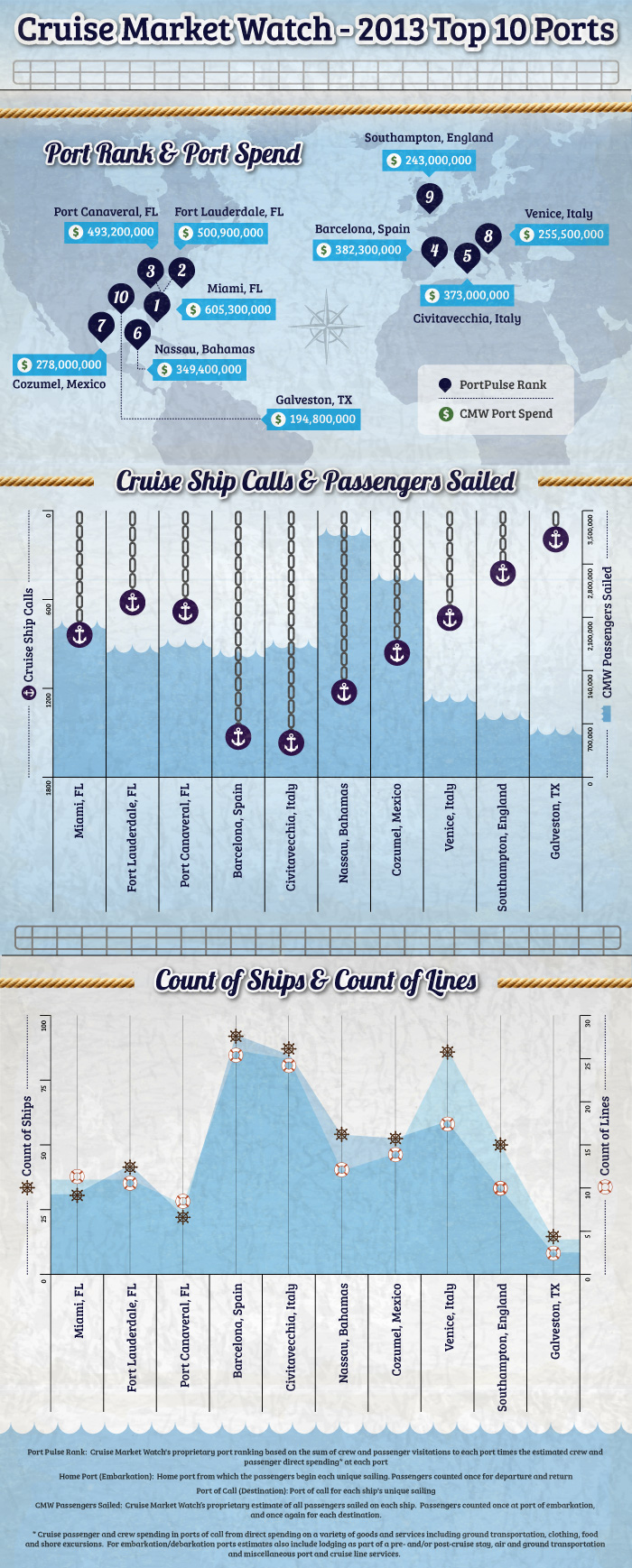Taking a cruise vacation? According to this infographic (with information provided by Cruise Market Watch), before you choose your cruise you might want to think carefully about which ports are included in your journey. No two ports are the same, and there’s a pretty big difference in both size and popularity of various ports around the world. What practical and useful tips can this data tell potential cruisers?

1. Miami is more impressive than ever
Miami tops this year’s PortPulse port ranks. PortPulse is an in-depth measure of a port’s success, taking into account factors as varied as seasonality trends and passenger spending habits. Despite shipping fewer passengers than two of the other ports in the top ten and ranking fifth in the number of cruise ship calls, Miami’s top status is assured by great all-year-round cruising opportunities and massive local infrastructure investment. Miami is not only a busy seafaring city, but also one of the world’s fastest-rising shopping destinations.
2. The US is the ‘best’ place to cruise
The top three cruising ports all belong to America; Miami, Fort Lauderdale and Port Canaveral each beat Europe’s top sites (Spain’s Barcelona and Italy’s Civitavecchia) in the PortPulse rankings, although both Barcelona and Civitavecchia see many more cruise ships calling each year.
3. Europe tops the rankings for cruising without crowds
Barcelona and Civitavecchia offer the highest ships-to-passengers ratios. In other words, their cruise ships are smaller, or less packed, than those going to competing ports around the world. So, if you’re looking for something smaller (or more secluded), think about setting off from Spain or Italy.
4. Europe might offer the best deals – but not always
While both Barcelona and Civitavecchia boast the highest numbers of cruise lines – hopefully leading to lower prices (thanks to greater inter-line competition) – Venice twists the European trend. Cruise lines operating from Venice are well-established, averaging around six ships per line (instead of the more usual three to four), despite offering the third-highest number of cruise line operators. Of course, rolling with a well-established cruise company doesn’t necessarily mean you’ll pay over the odds – but it’s worth thinking about when it comes to negotiating the best deal.
5. Busy doesn’t mean better
Although Nassau (the Bahaman port) ships more passengers a year than any other port in the world, this doesn’t make it any more lucrative as a travel venue than its competition. Why? Because the cost of living in the Bahamas is huge: around 30 percent more expensive than New York City, by recent estimates. This means that passengers’ money doesn’t go as far, pushing it down the PortPulse rankings. Of course, high costs don’t mean Nassau’s not worth a visit: the capital city of the Bahamas is renowned for its incredible climate and festivals. There are reasons why Nassau is the busiest port on the list, but bear in mind that your spending power might be a little restricted.



